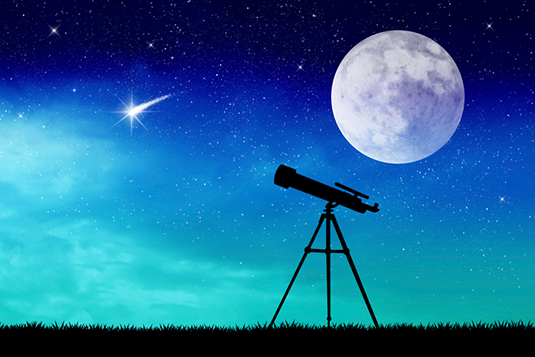The recent movie Hidden Figures explores the untold story of three African-American women whose exceptional mathematic and engineering skills helped send astronauts into space and bring them back safely in the 1950s and 60s.
Astronaut and physician Mae C. Jemison was born when these women were using their talents to break through racial and gender barriers. However, unlike the heroes in Hidden Figures—whose legacies were buried for decades—Dr. Jemison has been a prominent figure in our culture since September 1992, when she blasted into orbit aboard the space shuttle Endeavour and became the first African-American woman to go to space, and every science-loving little girl’s inspiration.
Growing up in Chicago in the 1960s, Dr. Jemison’s inspiration came from experiencing the world around her. At five years old, she declared to her parents and teachers that she wanted to be a scientist. And she also wanted to be a dancer.
“When I was a little kid, I remember very matter-of-factly assuming I would be a scientist. But I wanted to do other things,” said Dr. Jemison.
“I wanted to be a fashion designer, I wanted to be an architect—I wanted to be a dancer. There were all these things I wanted to do and they weren’t incongruent to me.”
As a child, Dr. Jemison was always trying to do her older brother and sister’s science projects for fun, but she also took dance lessons and a number of art classes.
“I loved art. I learned how to paint and draw, but ceramics class was particularly fascinating because there’s chemistry in ceramics. And then I did a lot of experimenting on how to make the best mud pies,” she laughed. “I saw science in everything around me.”
Dr. Jemison sees both the arts and the sciences as part of creativity.
“We should not have to justify teaching the arts as a way to help STEM education,” she said. “The arts are another way to engage students and discover new things.”
Dr. Jemison believes that every experience you have shapes how you view the world and what you do next. While she grew up in an era of racial and gender disparity, without role models of professional women doing the things she wanted to do, she credits her parents for supporting her desire to shoot for the stars.
Her message to parents who want to know the secret to helping their kids become successful, event rail-blazing adults is simple—take an active role in their learning at a young age.
“Sometimes as adults we are afraid of science, but at its heart, science is just critical thinking and understanding t he world around you;’ said Dr. Jemison. “We want our kids to focus on their future, but when they are young, let them explore the world.”
She points to results of the 1995-2011 Bayer Facts of Science Education surveys, which concluded that parents have a positive impact on t heir kid’s interest in science. The studies found that parents hold 15 universal beliefs, and in the top 10 was the belief that parents and teachers are critically important to nurturing children’s science interest, even if they are not scientists or don’t have all the answers.
“I consider my parents the best scientists I know,” said Dr. Jemison, whose mother Dorothy was an elementary school teacher.
Her father, Charlie, was a construction worker who also worked a second job as a maintenance supervisor. He went to a trade school to master his craft.
“He didn’t graduate from high school, but was very good in mathematics,” said Dr. Jemison.
The Bayer surveys also found that 60% of professional scientists and engineers discovered an interest in science before age 11. Parents and teachers were crucial to the development of this interest.
“While my parents weren’t professional scientists, they demanded that we think critically about the world and encouraged us to look up and investigate things we didn’t know,” added Dr. Jemison.
She says when you challenge your child to think critically, it boosts their confidence.
“They realize that they can find out about things they don’t know,” said Dr. Jemison. “It’s not a mystery, it’s just how much effort are they going to put in to find it.”
It’s All About Science Literacy
Today, Dr. Jemison commits most of her time to sharing her story with youth and their families across the country and establishing programs that give young girls and underrepresented youth access to science, technology, engineering and math (STEM) education.
Dr. Jemison’s goal is to increase every child’s science literacy skills. Science literacy is using general knowledge of science, math and technology to understand information, think critically, understand complex problems and innovate with others to solve them.
“I believe if we foster science literacy, we will naturally get the professional scientists, engineers, technologist and technicians that we need in our workforce,” she said.
In 1994, she started the Dorothy Jemison Foundation for Excellence in Houston, Texas, in honor of her mother’s teaching principles and life accomplishments. The foundation emphasizes building critical thinking skills, experiential teaching methods, science literacy and integrated approaches to learning.
‘Science literacy is about being able to read an article in the newspaper and figure out how to vote on something like climate change and the environment,” said Dr. Jemison. “We’re often asked to make important decisions about our health, but when we see the breakdown of the demographic and genetic statistics for different conditions and diseases, we don’t always understand what that means and how we should change our behavior.”
She believes if we approached science literacy the same way we do reading literacy, then these issues and how they impact our world wouldn’t be as difficult to understand.
How to Nurture Your Child’s Interest in Science
So how can you ignite your child’s passion for STEM education? Dr. Jemison says it starts with parents being willing to give their child a full range of human experiences and help them maintain their curious nature.
“We often want to put kids into this contained environment of a screen because then they don’t bug you,” said Dr. Jemison. “But they are going to bug you, that’s their job. So go out there and imagine how different the world looks if you start to look with them.”
“PTA’s whitepaper on STEM and families was very encouraging because it said parents say their kids like science and it’s easy to get their kids interested in science outside of the classroom; she said.
She says most parents are already doing the things that stimulate children’s learning— taking them to museums, reading books, going to the zoo, gardening, cooking and baking.
“Let boys and girls get dirty, skin their knees, climb trees, play with bugs— and bake bread! Watching yeast rise is so cool as a kid— and as an adult too!” said Dr. Jemison. “These are the activities that help develop their minds and understand what the world is like, and you need to bring that to science.”
Dr. Jemison says parents should also be involved in their child’s school activities by going on field trips and making sure the curriculum includes playing outside, the arts and science experiments.
Dr. Jemison is the chief ambassador of Bayer’s Making Science Make Sense® initiative which promotes hands-on learning, employee volunteerism, community partnerships and public education to advance science literacy across the U.S. The program also offers science projects you can do as a family on their website.
Expose Your Kids to Various STEM Professions
All families want to ensure their child has access to the best learning opportunities so they can eventually enjoy a fulfilling career. As your child grows and experiences more, they will start to focus their interests.
Tomorrow’s workforce will need more people in STEM-related jobs, however, that doesn’t necessarily mean your child has to study to become a doctor or astrophysicist. Dr. Jemison encourages parents to broaden the scope of STEM professions for their children. Your child should consider careers that require vocational school or a certification, because the majority of high-tech jobs do not require four-year degrees.
At NASA, Dr. Jemison depended on a variety of technicians to keep her safe. From the techs who put the tile on the space shuttle, to her suit technician Sharon McDougle, who performed unpressurized and pressurized leak checks on Dr. Jemison’s spacesuit.
“Most of them did not have college degrees, and yet they were responsible for our safety,” she said.
Dr. Jemison says these technicians are critical to the next generation of innovation and discovery. One of her current endeavors is being the principal of the 100 Year Starship project, the goal of which is to ensure we have the capability for human travel beyond our solar system to another star in the next 100 years.
She says the project is less focused on setting a launch date and more about establishing an inclusive effort across ethnicities, gender, geography and disciplines—physics, energy, biology, material science, storytelling, religion and art.
“How we all view the world will help us achieve our goal by 2111″said Dr. Jemison.
“We believe that by pursuing an extraordinary tomorrow, we create a better world today.”
Want to learn more about Dr. Mae Jemison? Read our 7 Fun Facts about Dr. Jemison.
Kisha DeSandies Lester is the senior editorial and digital manager at National PTA.





